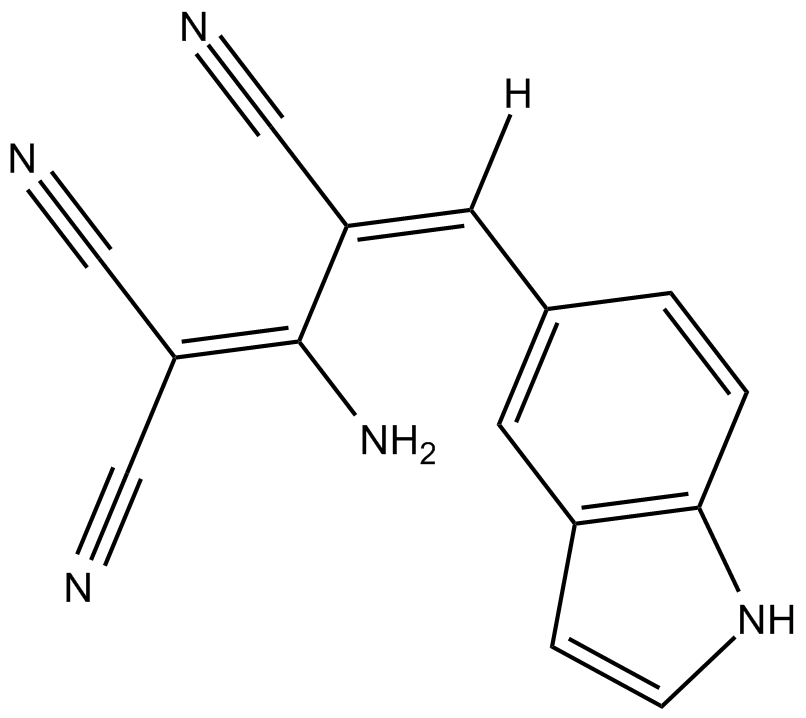AG-370 (Synonyms: NSC 651712) |
| Catalog No.GC11712 |
PDGFR inhibitor
Products are for research use only. Not for human use. We do not sell to patients.

Cas No.: 134036-53-6
Sample solution is provided at 25 µL, 10mM.
IC50: 20 μM for PDGF receptor kinase in human bone marrow fibroblasts
AG-370 is a tyrphostin PDGFR inhibitor.
Protein tyrosine kinase inhibitors are potential antiproliferative agents for diseases caused by the hyperactivity of protein tyrosine kinases. Tyrphostins are a class of antiproliferative agents selectively inhibiting protein tyrosine kinases of key growth factors including epidermal growth factor or platelet-derived growth factor (PDGF) via blocking the phosphorylation of tyrosine residues.
In vitro: Previous study found that AG-370 inhibited PDGF receptor autophosphorylation and the tyrosine phosphorylation of intracellular protein substrates that coprecipitated with the PDGF receptor in digitonin-permeabilized fibroblasts and in intact fibroblasts. When compared with AG18, a potent EGF receptor blocker, AG370 was more efficient in inhibiting PDGF-induced proliferation of fibroblasts and phosphorylation of the intracellular protein substrates. Under the conditions in which AG370 could inhibit PDGF-induced mitogenesis and phosphorylation, AG18 did not alter [125I]PDGF internalization and enhance [125I]PDGF binding. These findings suggested that AG370 might have a therapeutic potential for treatment of diseases involving abnormal cellular proliferation induced by PDGF [1].
In vivo: Up to now, there is no animal in vivo data reported.
Clinical trial: So far, no clinical study has been conducted.
Reference:
[1] Bryckaert, M. C.,Eldor, A.,Fontenay, M., et al. Inhibition of platelet-derived growth factor-induced mitogenesis and tyrosine kinase activity in cultured bone marrow fibroblasts by tyrphostins. Experimental Cell Research 199, 255-261 (1992).
Average Rating: 5 (Based on Reviews and 22 reference(s) in Google Scholar.)
GLPBIO products are for RESEARCH USE ONLY. Please make sure your review or question is research based.
Required fields are marked with *




















